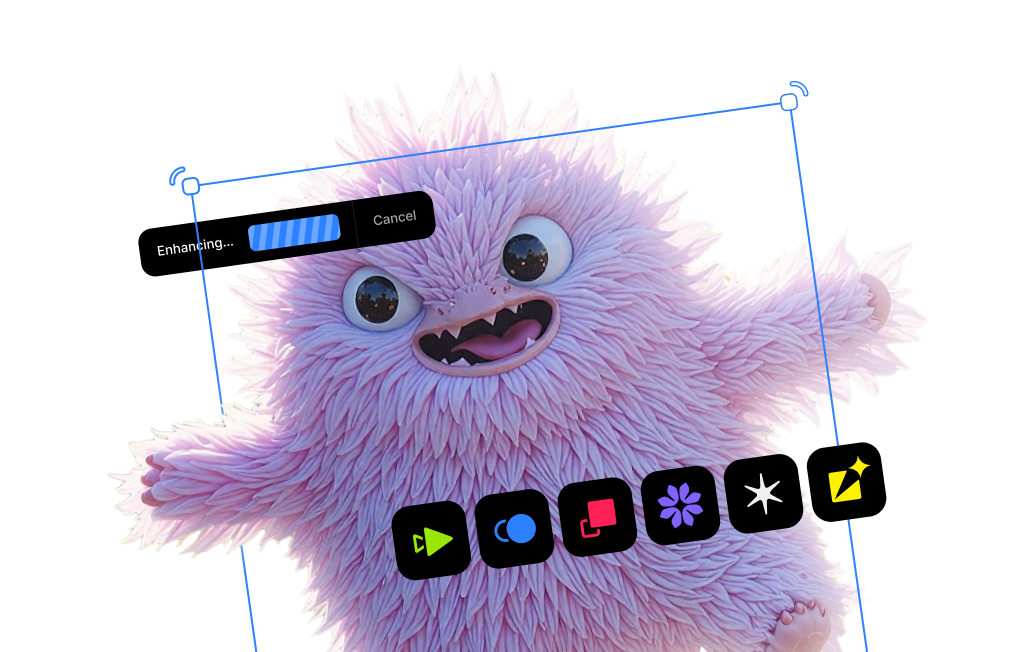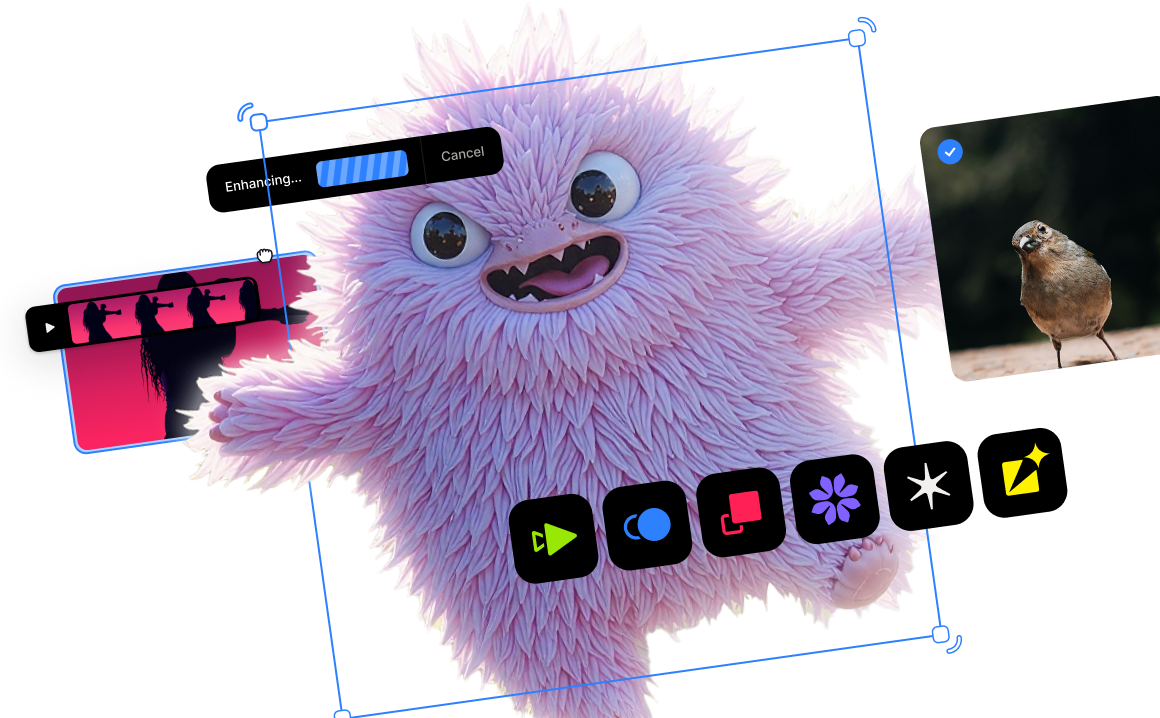What causes noise in your photos and how you can fix it

Using DeNoise AI to remove image noise from your photos
Noise is typically present in all digital images to some extent – sometimes appearing as a big, burdensome fuzzy curtain hanging over your beautiful shot and sometimes going nearly undetected without a good pixel peep.

The photo above is a certainly not uncommon scenario. As astro-photographers, concert photographers, and or anyone shooting outside a cloudy day can relate, low-lighting can make it aggravating to get a shot you’re happy with.

This above shot looks nearly perfect, but under the magnifying glass, there is a little “noise baggage” to deal with before it can be enlarged into a beautiful print hanging over a mantle.

With any amount of noise present, it becomes difficult to enhance your shot without first stripping the noise. Want to sharpen your shot? You’ll be sharpening the noise too! Want to increase exposure? You’ll bring light to the noise. The brutal fact of the matter is, a vast majority of image adjustments will only exaggerate pesky noise.
So, let’s take a deep dive into what causes noise in photography so you can become better acquainted with the enemy and learn how to defeat it from the start.
Know thine enemy: the most common types of noise in photos
Not all image noise is created equal. It becomes important to be able to identify the specific type of noise in your image because many post-processing softwares separate their noise reduction sliders by specific types, like Luminance and Chromatic (sometimes called Color) Noise for example.
Luminance noise

Luminance noise is two-fold: although it is colorless, it shows up as darker grain in the highlights of your image and as lighter grain in the shadows of your image. Luminance noise is created from over and underexposed pixels. It can vary based on the size of the camera’s sensor, the ISO setting, and the size of the pixels in the camera’s sensor.

Chromatic noise

Chromatic noise, sometimes called color noise, is best identified as those pesky color specks appearing across your photo. You’ll often notice chroma noise in the underexposed, shadowy parts of your photo.

The rainbow pattern of noise above is a typical example of chroma noise.
So, what causes noise in photos?
The perfect conditions for a shoot rarely exist. When it comes to image noise, low light situations impact the signal-to-noise ratio, introducing noise in your image. Similarly, air quality can affect the signal-to-noise ratio making foggy scenes appear noisy. To compensate for low lighting, photographers may use a high ISO setting.

High ISO settings
The ISO setting defines how sensitive your camera sensor is to the amount of light present in your scene. By increasing the ISO, we increase the signal each pixel emits when it meets with light to boost the brightness of the scene.A higher ISO setting enhances the sensor’s light sensitivity, increasing the electrical charge across the sensor, resulting in more static, or “noise.” It can also vary by camera model; cameras with large sensors will create less noise than cameras with smaller sensors. A high ISO setting is the most common contributor to image noise in photography.
- Low ISO settings (100/200): Most camera sensors have a native speed of 100 or 200 ISO. The lower ISOs are ideal for well-lit or sunny environments, or when your camera is stationary. These settings will afford you the best overall image quality with very minimal, if any, noise. If you are shooting handheld at these settings, be cautious of camera shake or subject movement or use a tripod to stabilize shots.
- Mid ISO settings (400/800): Graduating to a mid ISO setting around 400 or 800 allows for a balance between sensitivity and noise. Best for indoor shoots or cloudy days, image quality isn’t sacrificed and a manageable amount of noise is produced.
- High ISO settings (1600/3200/6400): A higher ISO enables faster shutter speeds to freeze motion (e.g. 1600+ ISO for indoor sports photography). You can also experience better performance in very low light (e.g. nighttime cityscapes, astrophotography, dimly lit indoor shoots). A higher ISO will also reduce image blur when shooting handheld. The tradeoff is the introduction of heavy amounts of noise.
Aperture and slow shutter speeds
In conjunction with shooting at as low of an ISO as possible, there are other factors weighing on exposure, like aperture. Think of aperture like the pupil of your camera lens.
Much like our very own pupils in our eyes and how they respond to light and dark environments, you can adjust the aperture to allow more or less light into your camera’s sensor. The smaller the aperture, the less light is allowed in and the larger the depth of field. A larger aperture allows for more light and a more shallow depth of field.

Another major factor in exposure is shutter speed, the duration in which the shutter is open, exposing the sensor. Measured in a fraction of a second (e.g. 1/125, 1/500), shutter speed can compensate for images that appear too light or dark at your selected aperture.
When you double the ISO (e.g. from 400 to 800), your camera only requires half as much light for the same exposure. For example, if the shutter speed is 1/250 at 400 ISO, upping to 800 ISO will produce the same exposure at 1/500 second (with a static aperture).

This forest scene only used an ISO value of 250 despite the low light and small blip of sunlight. However, by using a wide aperture setting, f/1.4, the lens is wide open for more light to enter. The wider aperture setting also allows for a fast shutter speed setting of 1/500 of a second to capture the woman in the forest and freeze the subject in motion.
How to reduce noise in your images
A blanket of noise doesn’t have to ruin your next shot. Here are a few steps you can take to reduce image noise at in your workflow.
Be sure to shoot in RAW
Taking photos using your camera's RAW format gives you far more flexibility and greater control during post-processing. Depending on the quality of your camera sensor, you'll also have a much easier time working with tonal values, thereby making working with noise more manageable.
Use In-Camera Noise Reduction
Despite less than perfect shooting conditions, you can still take more control of your shots with your camera’s own noise reduction feature. Some models have noise filtration algorithms built into their cameras that turn on automatically when high-ISO settings (usually 800 and above) and/or long exposure times are in use, or you can manually enable it.
Q: “Since I want the highest quality, clear shots all the time, should I leave the in-camera noise reduction feature on all the time?”
A: Unfortunately, you might find the extra processing times to reduce noise in-between shots a little too burdensome to use in-camera noise reduction all the time. It’s estimated most cameras will take about twice as long to record the shot with this feature enabled as the camera’s software works hard to identify and reduce noise, but it can be useful on certain occasions.
Some cameras also feature Low and High NR settings for a little bit further control. The best advice is to experiment with your own model, because many cameras treat and resolve noise differently – some detect noise in the signal and selectively reduce the most apparent noisy areas, while some apply a blanket smoothing effect across your image.
Put it to the test:
Take a photo in low light with a high ISO setting and disable the in-camera noise reduction filter. Next, replicate the same photo with the NR on (if your camera includes Low and High NR filters, try both!). Now, in your first photo without NR, find the area most heavily affected by noise and apply a tight crop around it and examine the details and noise reduction. Apply the same crop in the same location to the other test images and do a side-by-side comparison.
Like any photographer will tell you, getting the shot right in the camera is always the goal, so feel free to use the tools at your disposal! Just make sure you have put them to the test for your particular work so you don’t turn your image into something that’s even harder to correct later.
Because of the limitations to in-camera noise reduction, most photographers prefer correcting noise in post-processing software.
Use noise reduction software in post-processing
Despite the advancements in in-camera noise reduction technology, many photographers use noise reduction software in their post-processing workflow for several reasons.
Post-processing noise reduction software allows users to:
- Speed up the post-processing flow by batch processing hundreds of images with noise
250 shots of dancing ballerinas on a dark stage. 300 shots from icy Alaska capturing the dancing auroras. Processing each shot one-by-one after a fun shoot is a buzzkill. That’s why batch processing capabilities become oh-so-important. Let's take our noise reduction software for example, DeNoise AI.
With DeNoise AI, simply import multiple images from your desktop, image folders, or drag & drop from your Lightroom library for speedy batch processing. Apply bulk settings to all your images in a similar scene for rapid processing, or single out an image, or a handful of images, and apply different settings to those among the bunch before completing your batch process.
- Exert more control over your images by applying different amounts of noise reduction and take advantage of detail restoration features
DeNoise AI aims to preserve as many image details as possible and gives you the opportunity to sharpen detail for a clear and crisp photo, the way you intended it.
- Use more fine-tuned technology to treat specific types of noise, like chroma noise and luminance noise
When it comes to noise reduction software, you’ll want to be cautious of not over-softening your image. Much like following a cookie recipe, adding more sugar can be a tempting idea when you’re baking, but can result in an inedible treat destined for the trash can. Don’t let the same happen to your images! While maxing out noise reduction sliders to 100 can be tempting, you’ll over-bake your image and it’ll result in a desaturated, over-softened photo.
Having to manually adjust the sliders in Adobe Lightroom for example, can be an experiment with lots of decisions to be made along the way.

Luminance noise reduction should be applied methodically, using just enough to restore the image, but not enough to remove details and structure:
Luminance Slider: This adds noise reduction, the higher the value applied, the greater the strength. Keep in mind, Lightroom will blur details that it identifies as noise, so thoroughly check that you’re not sacrificing important details you want to keep. The finer the detail, the more likely it will be counted as noise and blurred.
Detail Slider: The Detail Slider becomes active after the Luminance slider is set higher than 0, working in tandem. At higher levels, noise reduction is only applied to the strongest noise, while at lower levels, reduction is applied only to the more subtle noise. Here’s another chance for Lightroom to mistake fine detail for noise, so be cautious.
Contrast Slider: Active when Luminance is set higher than 0, the Contrast slider attempts to restore any loss of contrast experienced during noise reduction. At higher values, you could experience patchy groups of color.Chroma noise presents its own challenges: Color Slider: This adds noise reduction, the higher the value applied, the greater the strength.
Detail Slider: At lower values, the specks of color are removed, but runs the risk of color bleeding.
Smoothness Slider: Another option to smooth out color specks but can result in a desaturation at higher values, dulling your image.Although post-processing software is intended to give you more freedom in enhancing and correcting your images, most photographers want combination of quality results, delivered in a speedy way.
DeNoise AI combines both of those wishes with a more powerful, intuitive way to remove noise, and retain details. You can manually experiment with the details or let DeNoise handle it for you with the “Auto” modes. Batch processing hundreds of images with “Auto” or manually adjust a few and keep the rest automatically de-noised. You have options that best suit your workflow and your time.

Curious as to how machine learning works with noise reduction in photography? We talk in-depth about our one-of-a-kind noise-reduction technology. Dive into how DeNoise AI was created with Dr. Partha Acharjee, lead R&D scientist on noise reduction at Topaz Labs.And don't forget that you can try DeNoise AI for free!




.png)
.png)
.png)




